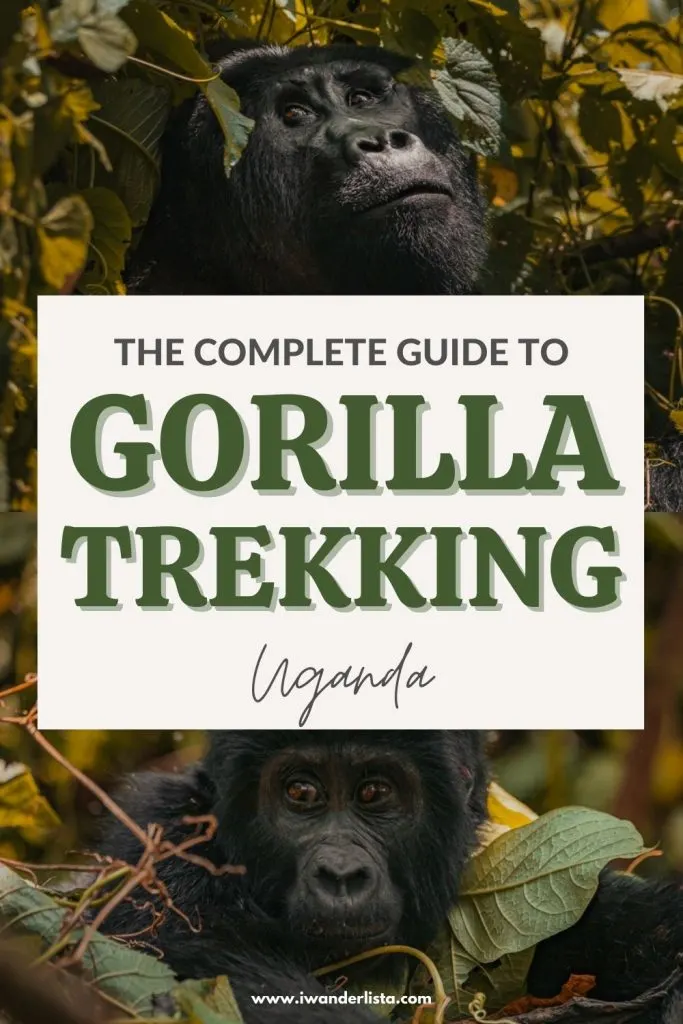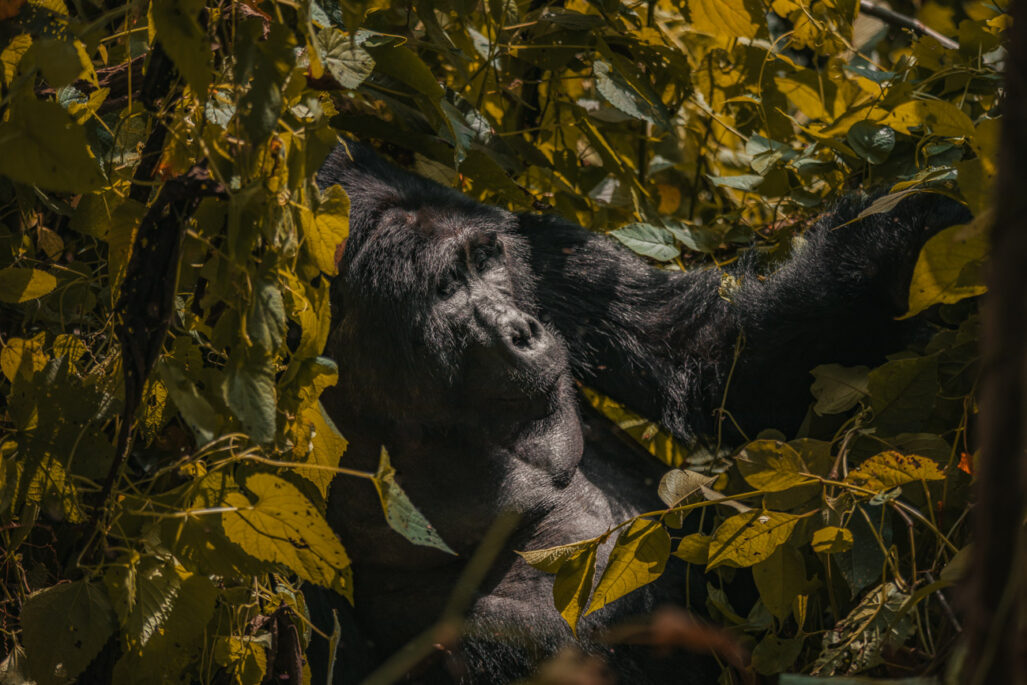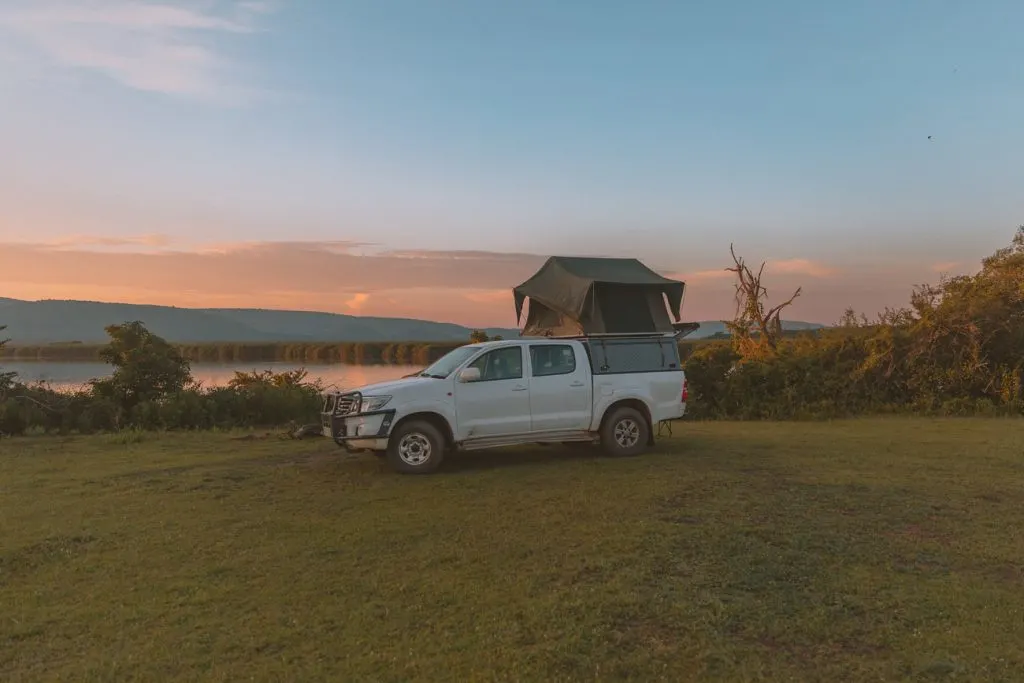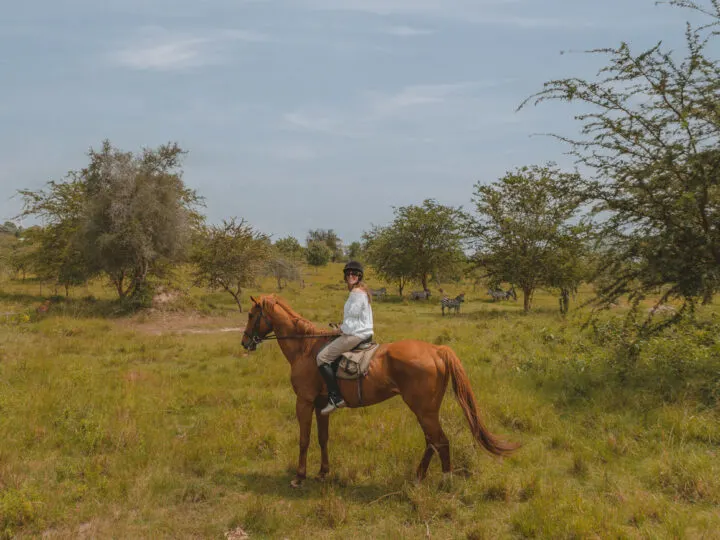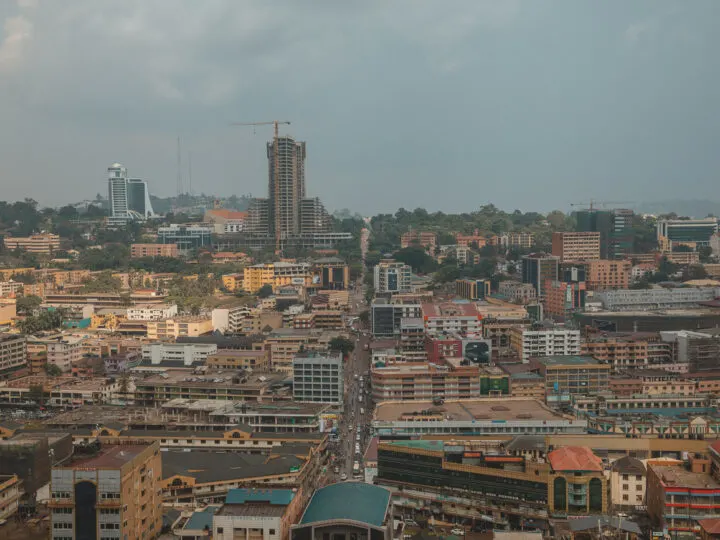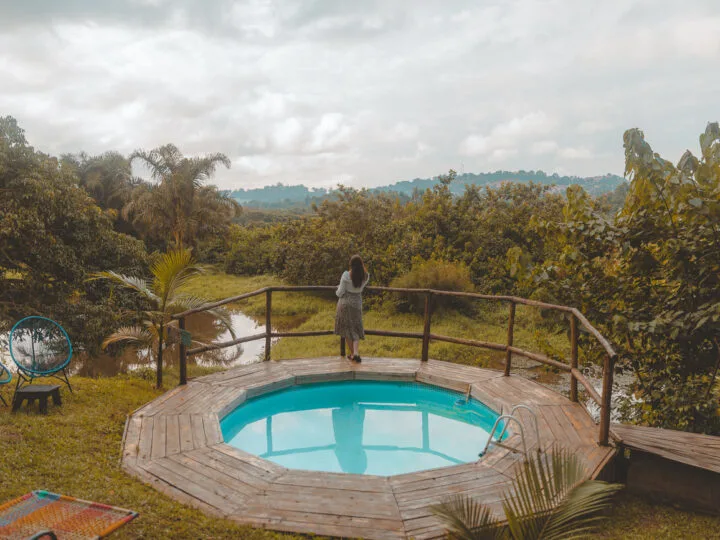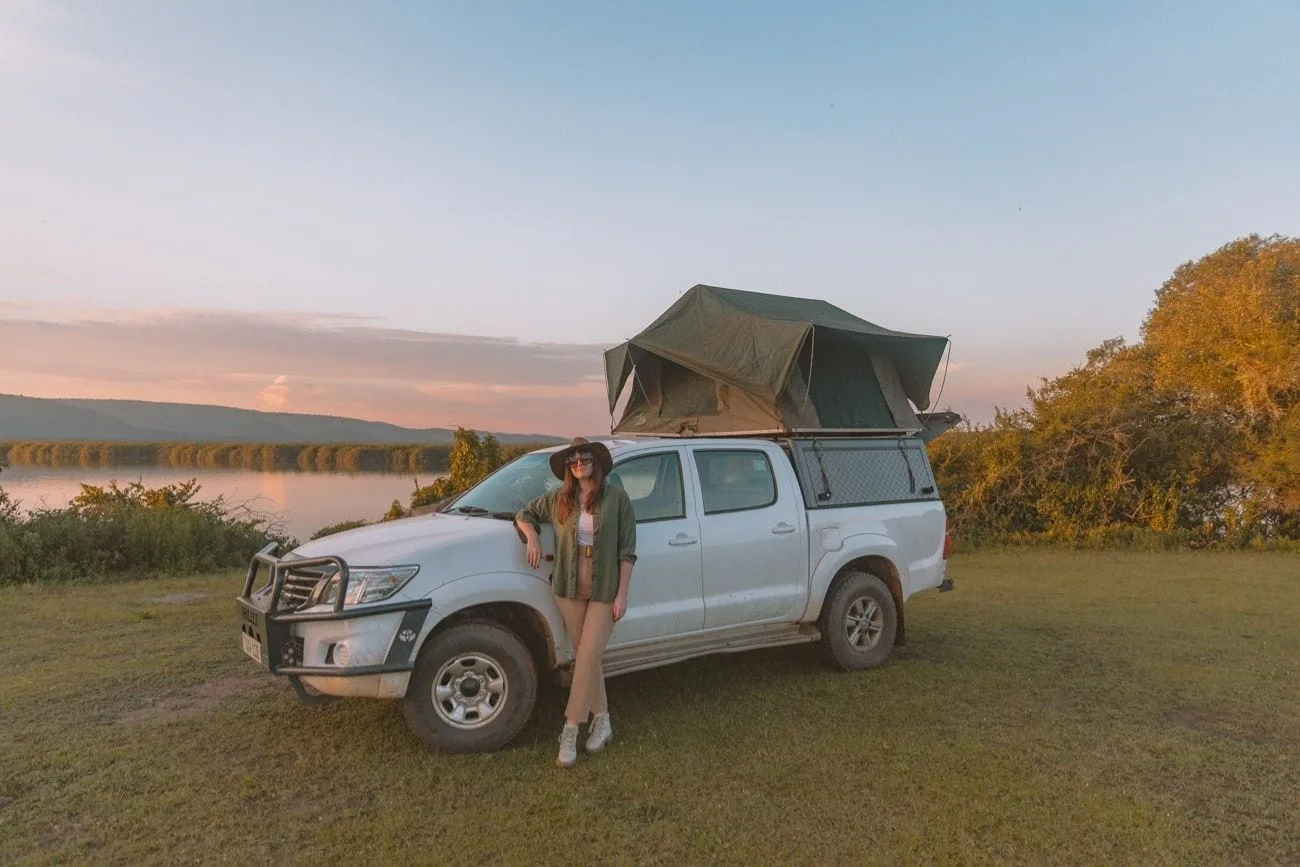When it comes to bucket list experiences, not many can beat gorilla trekking Uganda. This rare opportunity is only possible in three countries in the whole World, and Uganda is one of them. Gorilla trekking in Uganda provides a rare opportunity to see these gentle primates in their natural habitat and it’s an experience worth taking. To help you plan and be well prepared for your own gorilla trekking in Uganda, here is everything you need to know about this ultimate bucket list experience!
When to go gorilla trekking in Uganda
There are currently around 800 mountain gorillas in existence, and they only live in the dense forests of Uganda’s Bwindi Impenetrable Forest National Park and Mgahinga Gorilla National Park, Rwanda’s Volcanoes National Park and Democratic Republic of Kongo’s Virunga National Park. Gorillas don’t pay attention to political borders, but the most populated of all of these is Bwindi, or the place of darkness, which is the home to half of the world’s mountain gorillas and where we did our gorilla trekking in Uganda.
Since Uganda is located by the equator, it makes it a true year-round destination. The temperatures throughout the year are ranging between 20 °C and 29 °C (68 °F and 84 °F), and it rarely gets hotter than 29°C, which makes for a very pleasant climate on your travels, year-round.
The rainy season is from March to May and October to November. While there might be light downpours in November and December, your travel won’t be hindered as the rains are typically short and intense, with sunshine that follows. The normal dry season is from December to February and June to August.
The best time of the year to go gorilla trekking in Uganda is December to late February and from June to September. But do also expect a bigger influx of people (and prices in general, not the permits) during this time.

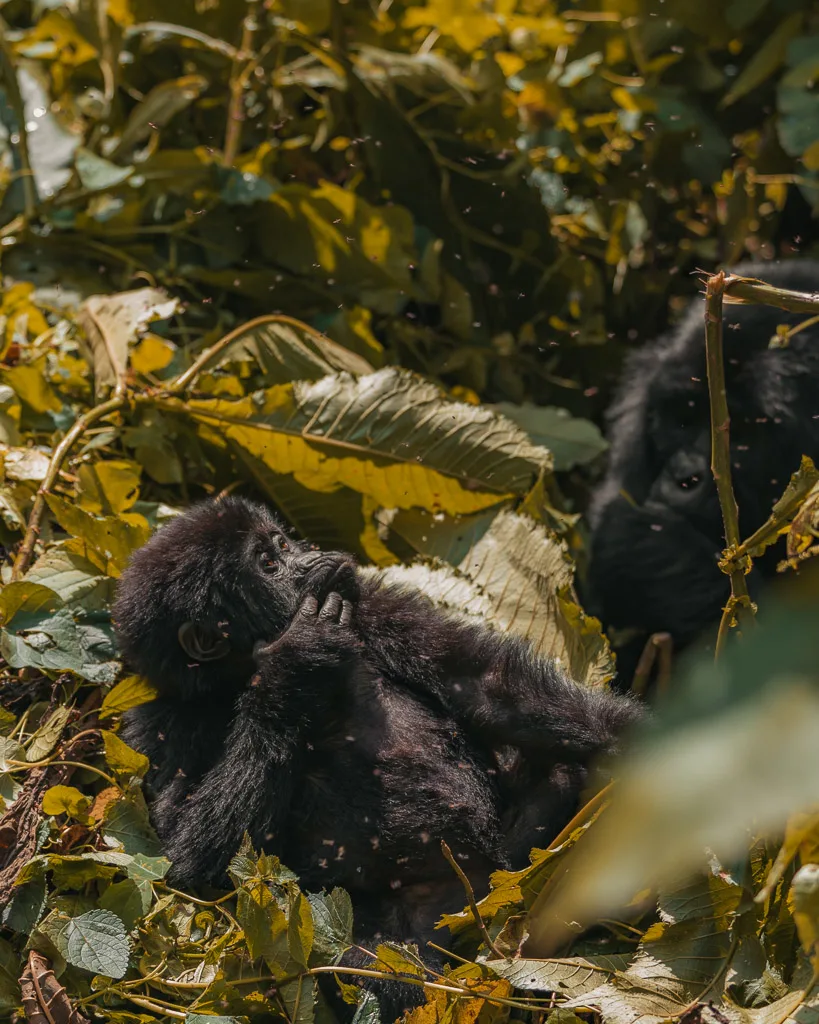

We went in December, however, and had great weather. My best advice is to book your trip to Uganda depending on your budget. If you want to save, book off-season and if money is not the priority, then book any time of the year. Gorilla trekking permits are usually discounted between March to May when also lodges and car rental rates might drop. The rest of the year, the UWA does not discount the gorilla trekking permits.
How to book and obtain permits for gorilla trekking in Uganda
Obtaining gorilla trekking permits in Uganda is no easy task to do on your own. It can be possible, but the Uganda Wildlife Authority is not easily reachable, so the best way to handle this is via a tour company.
It is generally recommended that you reserve your permits well in advance (about 3 months is generally a good idea) and through a tour company (we booked with Roadtrip Uganda and can highly recommend them). The Uganda Wildlife Authority (UWA) issues the permits only upon payment in full (no pre-booking) and the permits cost USD $700 per person.
Booking gorilla trekking Uganda was the scariest of our entire trip, as crazy as it sounds. You send an extraordinary amount of money to UWA and receive no receipt or guarantee. The booking is made with your selected tour company and upon proof of payment they will send UWA your personal details, passport number, preferred starting location and two dates for when you’d like to trek.
Since this experience is so exclusive, only 8 people are allowed to visit one gorilla family at a time, for 1 hour. This is the main reason for you needing to send two preferred dates – so you can attend the second in case the first is already booked up. Roadtrip Uganda was super responsive and gave us every kind of confirmation of our payment and confirmed the date as soon as we needed it.
Useful tip: Book your gorilla trekking in Uganda first. After you have a confirmation on the trekking dates, book your flights to Uganda.
Gorilla trekking price and cancellation rules
As I mentioned above, gorilla trekking in Uganda does not come cheap, but is a unique experience and, in my opinion, worth every penny.
Prices:
The prices for gorilla trekking in Uganda are USD $700 per person, which is a lot less than in Rwanda, where the price is much heftier, at USD $1500 per person. While it does come cheaper in DRC Congo, at USD $400, the safety situation is not always stable there. All in all, doing a gorilla trek in Uganda is by far the best option!
Gorilla trekking cancellation rules:
a. 3 months / 91 days before trekking date: 70% refund
b. 46 – 90 days: 50%
c. 9 – 45 days: 25%
d. 0 – 8 days: no refund

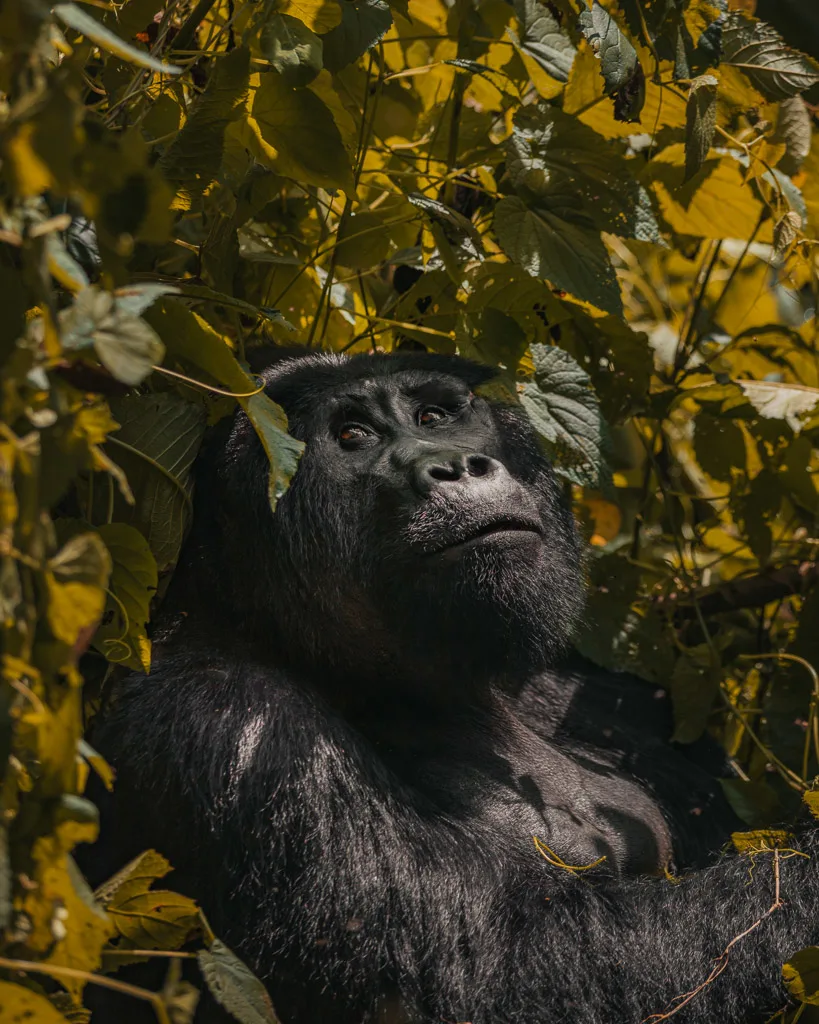
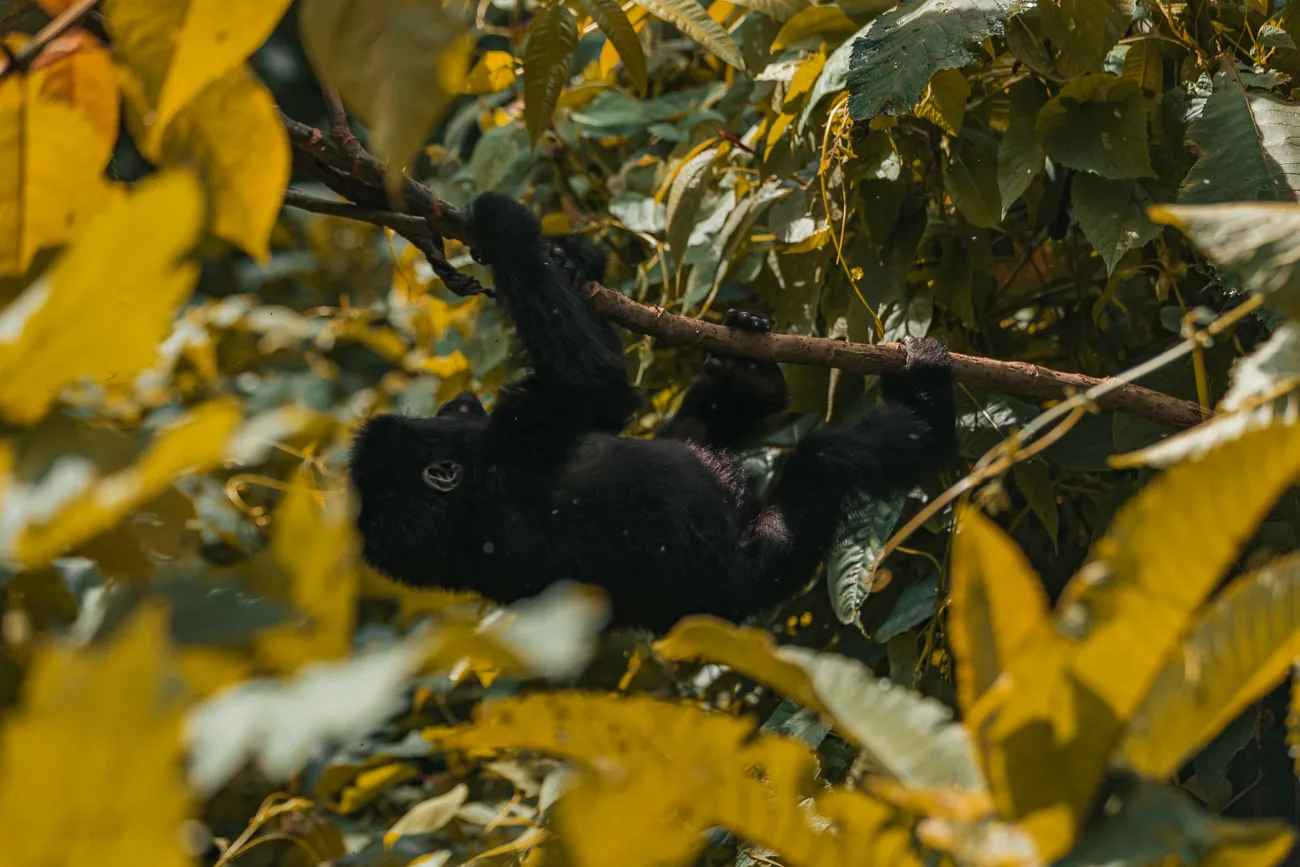
What to expect on your gorilla trekking experience
We started our day very early on this day and departed Mutanda Lake Resort (the best base for gorilla trekking) at 6 am. We arrived at the meeting point at Bwindi Impenetrable Forest at around 7.45 am and waited for our trek briefing.
The trekking usually starts at around 8.30 am and depending on where the gorillas were the previous day, the trekking can take 1 to 8 hours. Since they want to make this experience as inclusive as possible, you’ll be split into groups of max 8, depending on your physical ability. The less walking you are able to do, the closer the family you will be assigned to.
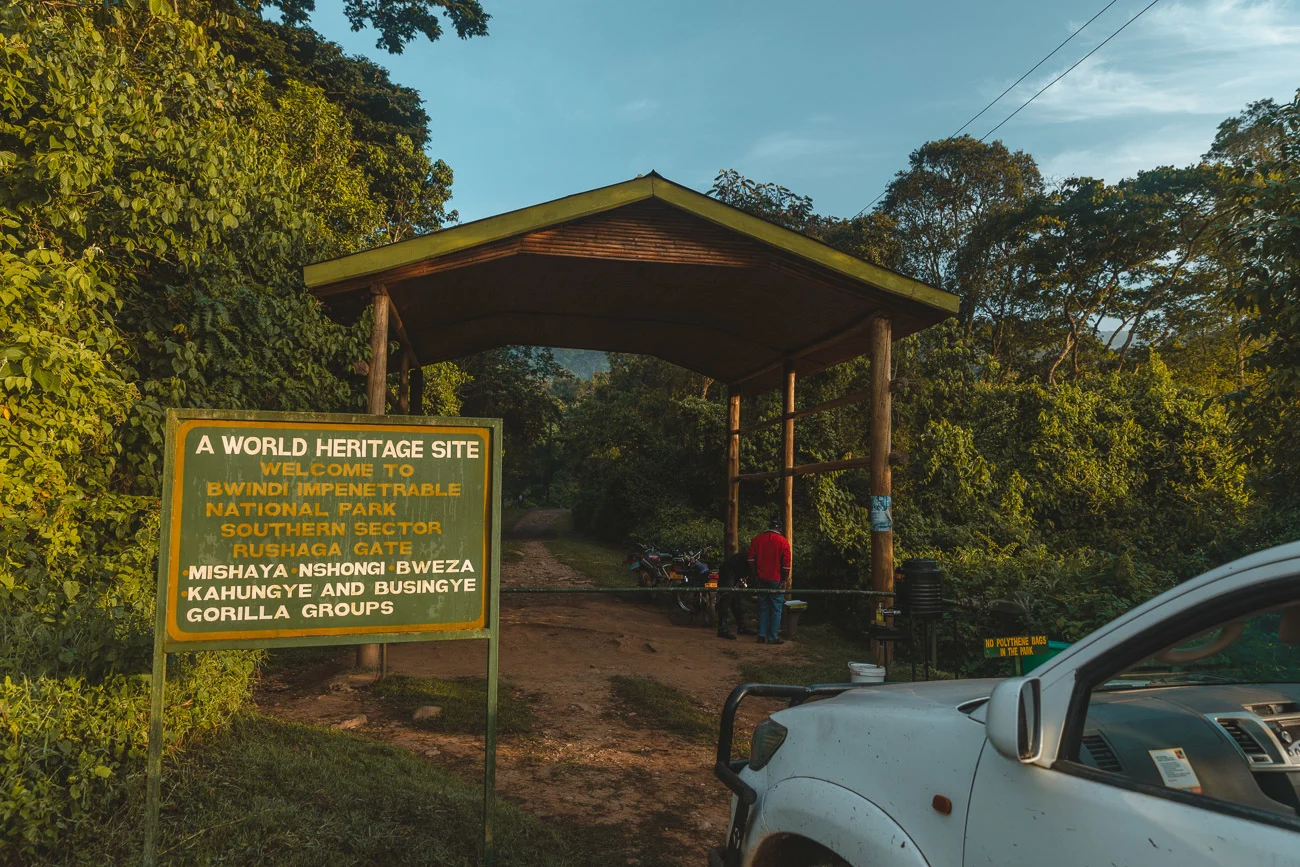

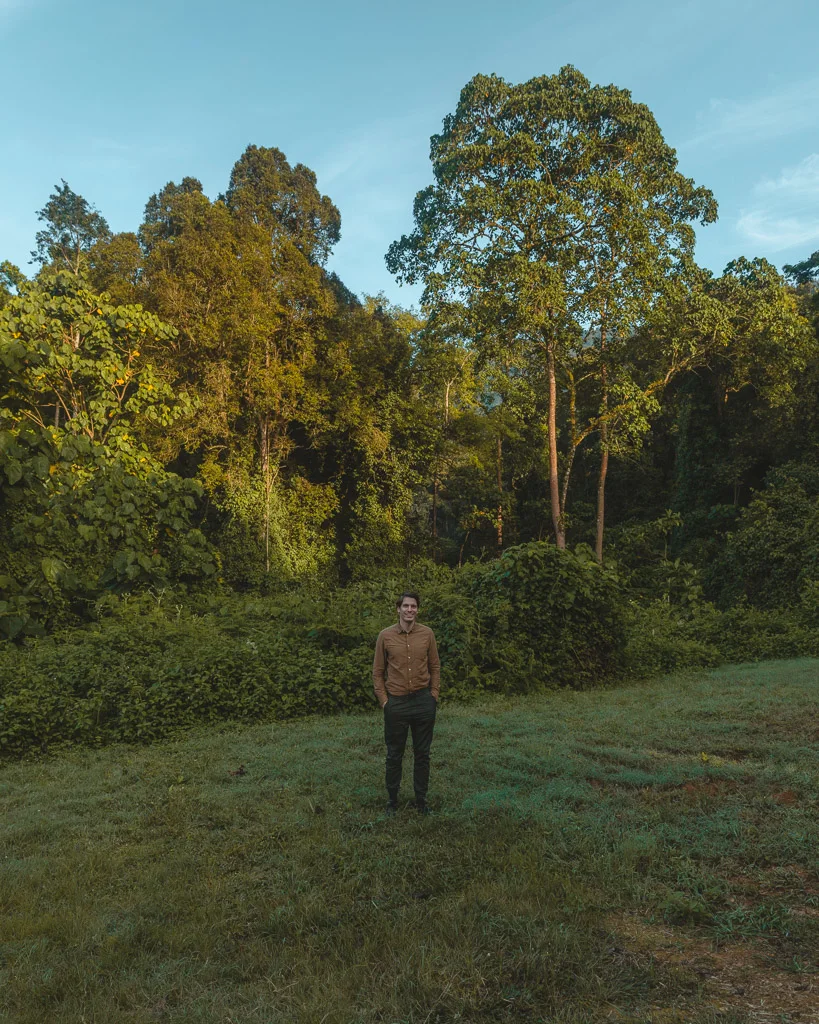

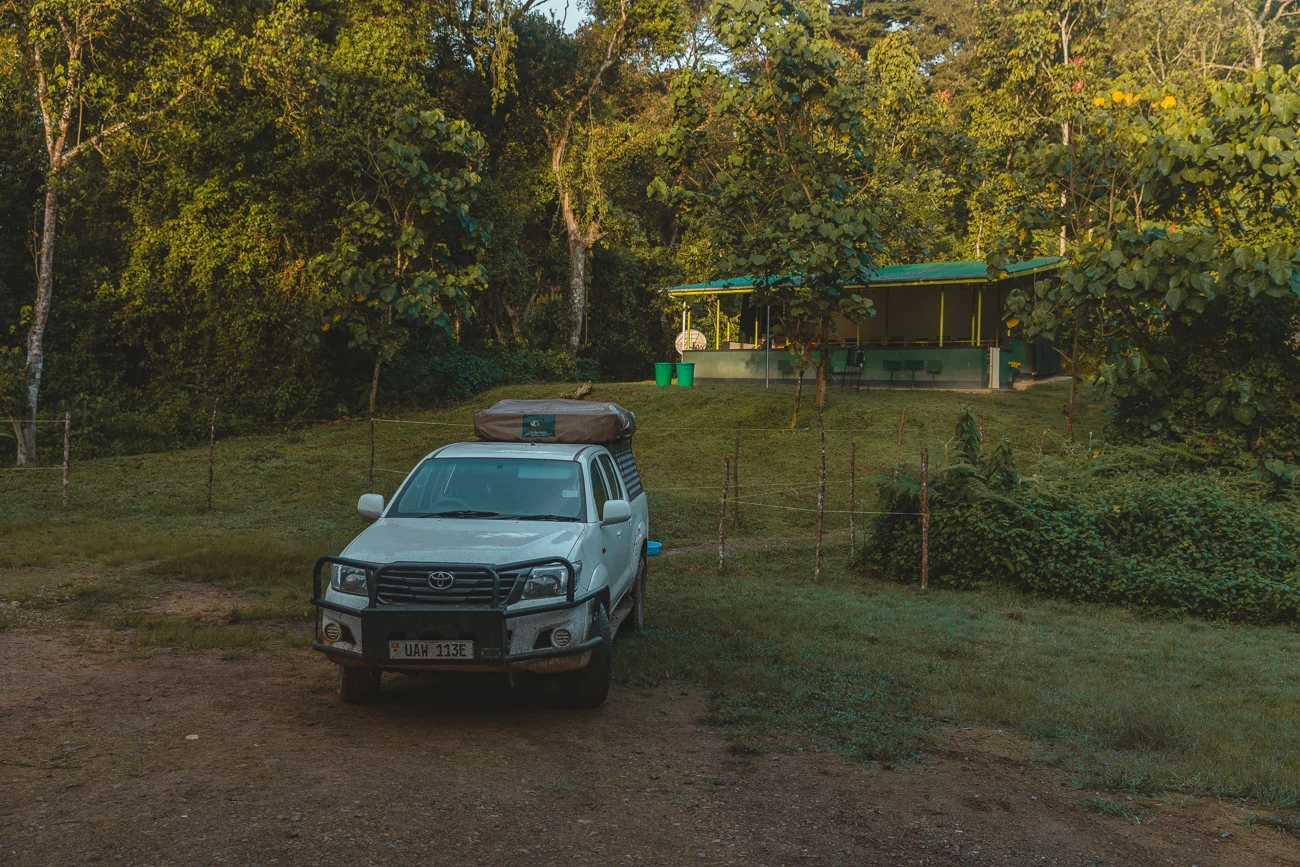


All treks are done about an hour after the gorilla trackers have gone in the forest to locate the gorilla families, so they will already know where they approximately are from the day before. These trackers spend time with these gorilla families and do the trek, every single day. This is to get the mountain gorillas used to human presence and not be aggressive towards you.
Every group is accompanied by rangers (we had 3) and a porter, if you wish to hire one – more on porters later. Once you set off into the jungle, the real fun starts. We did a medium hike and it took us a bit over 2 hours to trek to our designated mountain gorilla family called Mubare. The path was difficult, muddy and slippery, so I was very happy that I borrowed a walking stick and hired a porter. But even despite that, I fell in the first 10 minutes of the trek and 2 more times after that haha!
Once your group reaches the trackers, you’ll leave your backpack behind with the rangers, only take your camera, and join the trackers for your 1 hour with the gorillas. The 1-hour watch starts when the whole group is together, so don’t feel hurried by fellow trekkers who want to reach there quickly. This hour is strict – the gorillas get restless and feel if the humans have over-extended their presence.
This is a once-in-a-lifetime experience, so don’t forget to put down the camera and just enjoy watching these gentle creatures.
We travelled here during the pandemic and didn’t have a choice on which family we were assigned to or the difficulty of our trek. They are trying to minimize contact with humans and we also had to wear masks.

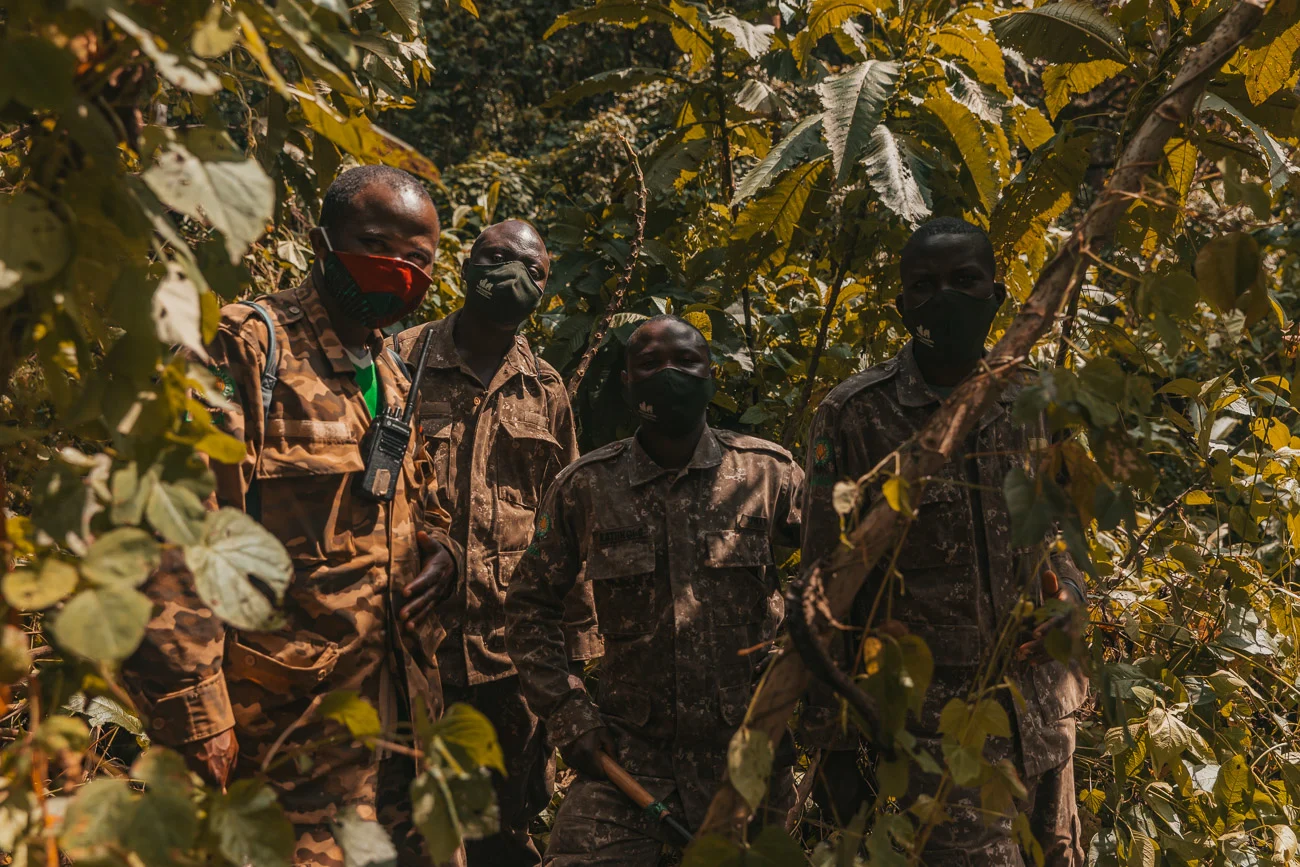

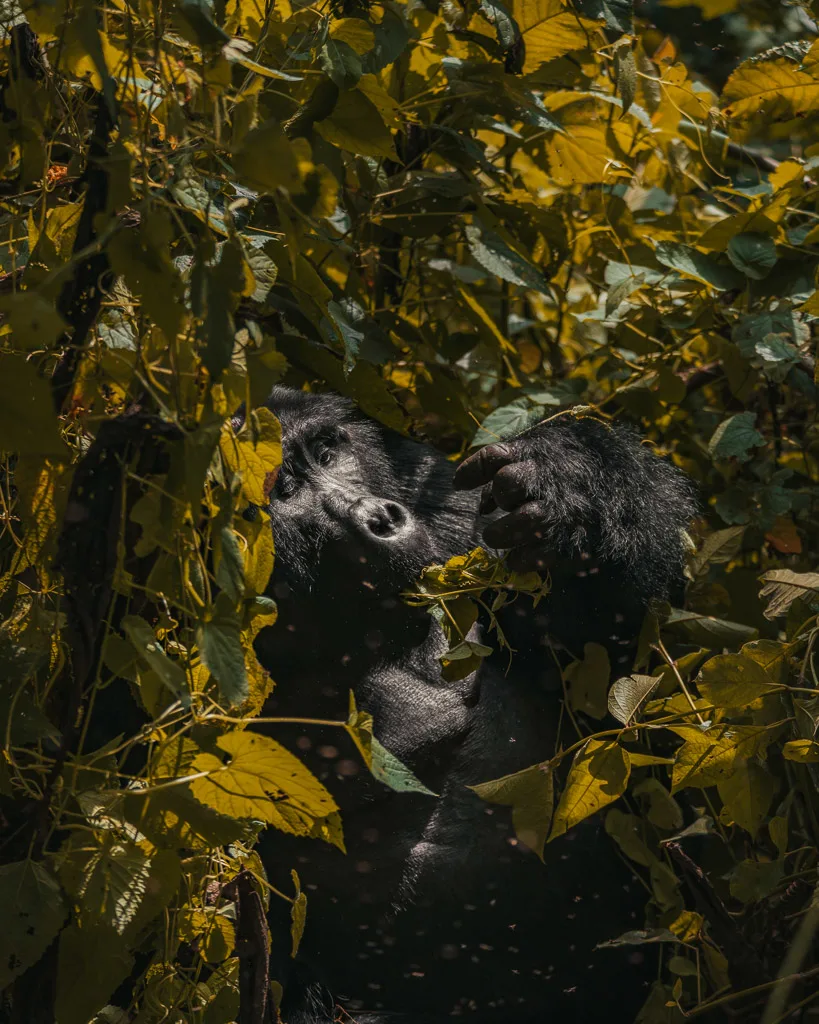

Hiring a porter
My boyfriend and I were the only ones there during our trip, so we were also the only ones in our trekking group, besides the rangers and a porter.
Before you start the trek you’ll have the possibility to hire a porter for USD $15. A porter is a local man who will help you carry your backpack and give you a hand on the hike. I hired a porter, but my boyfriend (who is the more athletic one) didn’t. I was very happy I had help with the trek as it gets very slippery in places and having someone to hold your hand while on steep locations was definitely super helpful for me!
Besides the porter, you can also borrow a walking stick for free. I had one but barely needed it. They actually hinder the trek a bit if you want to take photos as well, so unless the path is very slippery you won’t need one.
What photography gear to bring
The one thing you don’t see in the photos of people who have gone gorilla trekking in Uganda is just how hard it can be to capture these creatures!
If the weather is sunny, expect the gorillas to be hiding under bushes and trees. And because of them hiding, it’ll be a challenge to capture them with a normal lens.
Bring a zoom lens and take your photos in raw. This way you’ll be able to really adjust those shadows and highlights. If you plan on making videos, bring a stabilizer as well to capture their movement and not your post-hike shaking hehe!

Practical tips and what to pack for your gorilla trekking
What to wear:
– wear comfortable clothes with long sleeves and legs to protect yourself from insect bites
– don’t have light clothes unless you don’t mind them getting dirty
– good trekking shoes that can handle slippery and muddy surfaces
– gloves for when you need to grab onto twigs while walking (garden gloves will do)
– a sun hat to protect you from getting sunburnt on the trek
– pack or wear a rain poncho in case of rain. You won’t be able to trek with an umbrella and getting soaked is definitely not going to make the experience enjoyable!
What to pack:
– bug repellent
– pack your sunscreen with you or apply at the beginning of the hike
– if your accommodation packed lunch for you, take that. Otherwise, we were fine with a just a sandwich we made the day before.
– at least 1L of water per person and some snacks (take all trash with you)
– bring good photo equipment. What no one tells you is that there are small flies surrounding the gorillas almost constantly

Gorilla trekking Uganda – an unforgettable experience
Once you are done with this beautiful and humbling experience, you will remember it forever. Observing creatures that are so similar in their behaviour to humans, without being locked up in cages is so mesmerizing you need to do this when you travel to Uganda.
Observing a family behave as if you are not there will leave you speechless. We watched the mountain gorillas eating branches, leaves, playing and hopping around, all under the careful supervision of the great silverback.
Gorilla trekking in Uganda was the rawest and most beautiful wildlife experience we have ever had and I definitely recommend you to do it once in your life!
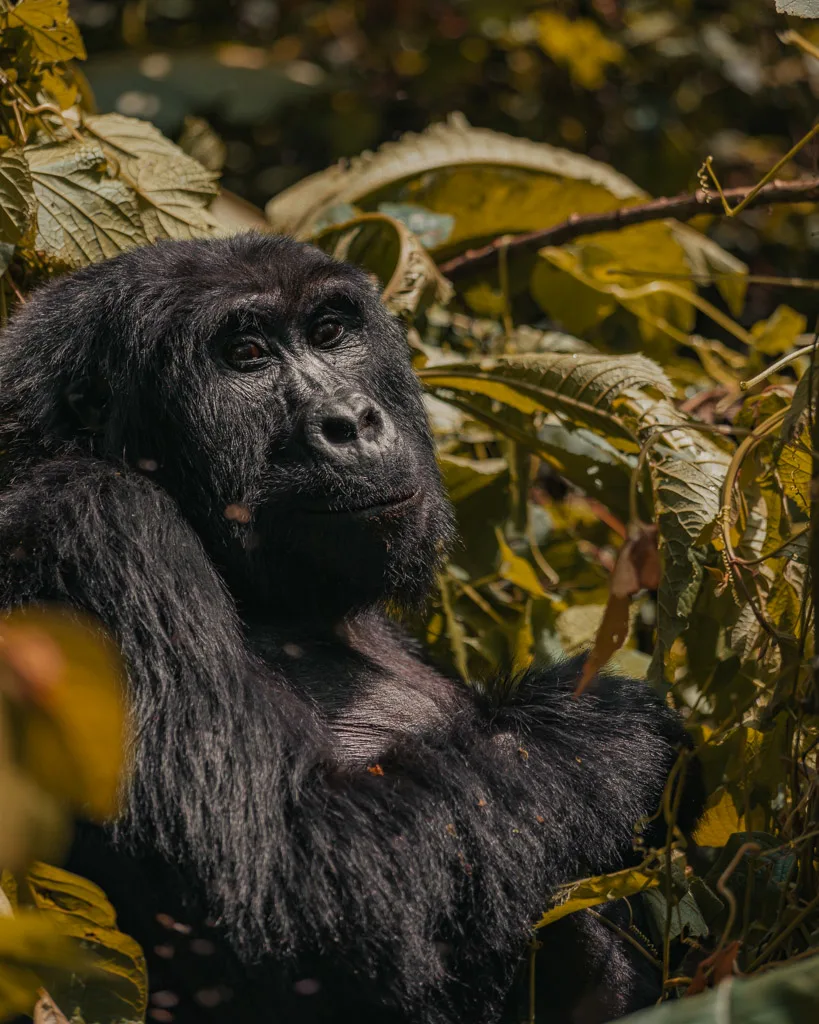

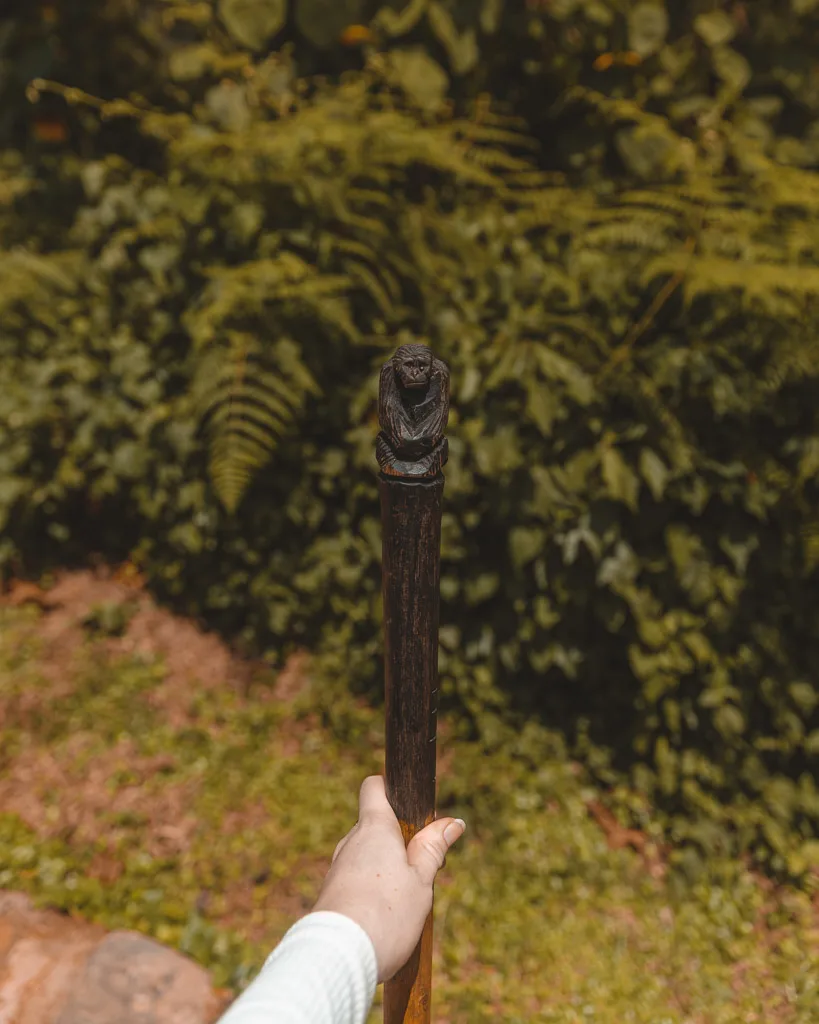


Save this article for later:

